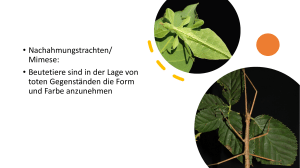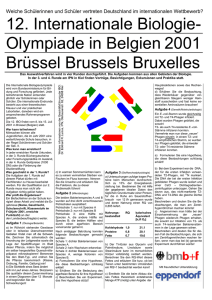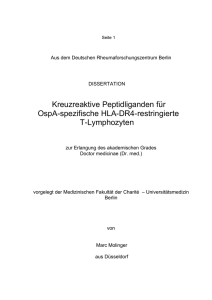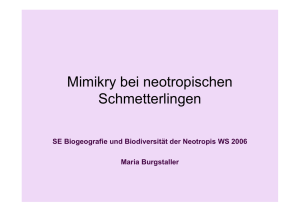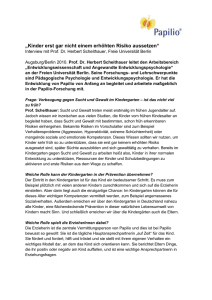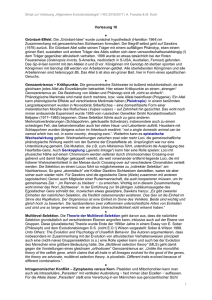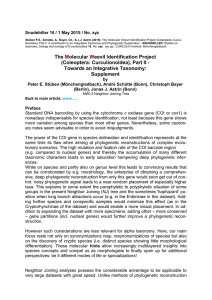Thema Nr. 11: Mimikry-Polymorphismus (Bates`sche Mimikry) mit
Werbung
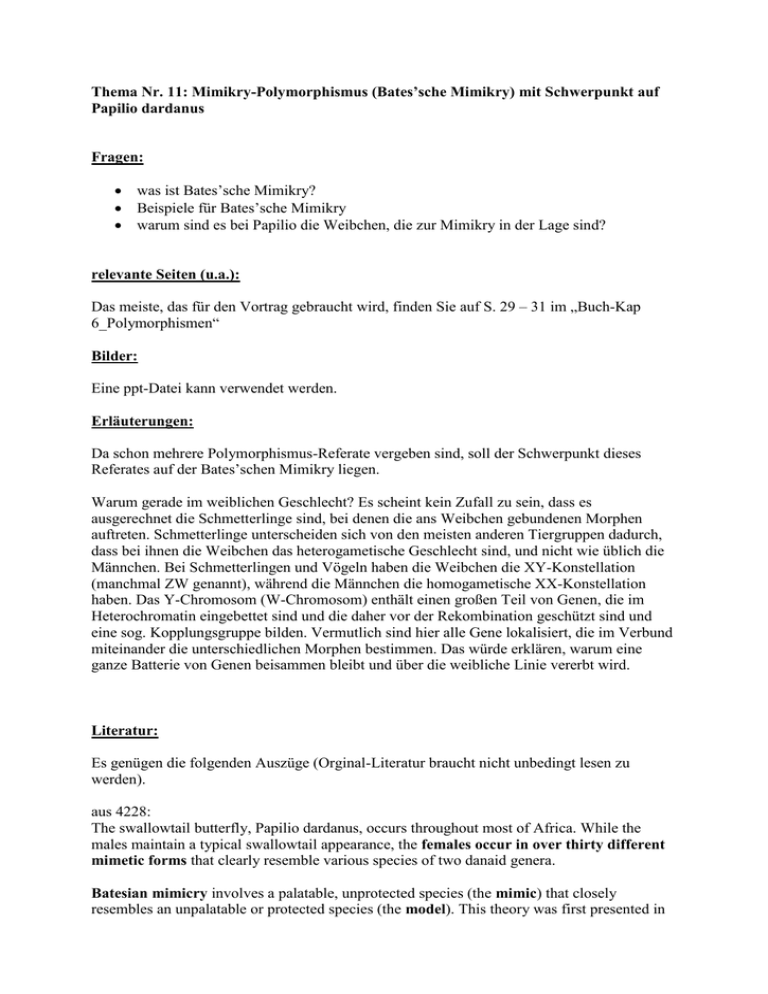
Thema Nr. 11: Mimikry-Polymorphismus (Bates’sche Mimikry) mit Schwerpunkt auf Papilio dardanus Fragen: was ist Bates’sche Mimikry? Beispiele für Bates’sche Mimikry warum sind es bei Papilio die Weibchen, die zur Mimikry in der Lage sind? relevante Seiten (u.a.): Das meiste, das für den Vortrag gebraucht wird, finden Sie auf S. 29 – 31 im „Buch-Kap 6_Polymorphismen“ Bilder: Eine ppt-Datei kann verwendet werden. Erläuterungen: Da schon mehrere Polymorphismus-Referate vergeben sind, soll der Schwerpunkt dieses Referates auf der Bates’schen Mimikry liegen. Warum gerade im weiblichen Geschlecht? Es scheint kein Zufall zu sein, dass es ausgerechnet die Schmetterlinge sind, bei denen die ans Weibchen gebundenen Morphen auftreten. Schmetterlinge unterscheiden sich von den meisten anderen Tiergruppen dadurch, dass bei ihnen die Weibchen das heterogametische Geschlecht sind, und nicht wie üblich die Männchen. Bei Schmetterlingen und Vögeln haben die Weibchen die XY-Konstellation (manchmal ZW genannt), während die Männchen die homogametische XX-Konstellation haben. Das Y-Chromosom (W-Chromosom) enthält einen großen Teil von Genen, die im Heterochromatin eingebettet sind und die daher vor der Rekombination geschützt sind und eine sog. Kopplungsgruppe bilden. Vermutlich sind hier alle Gene lokalisiert, die im Verbund miteinander die unterschiedlichen Morphen bestimmen. Das würde erklären, warum eine ganze Batterie von Genen beisammen bleibt und über die weibliche Linie vererbt wird. Literatur: Es genügen die folgenden Auszüge (Orginal-Literatur braucht nicht unbedingt lesen zu werden). aus 4228: The swallowtail butterfly, Papilio dardanus, occurs throughout most of Africa. While the males maintain a typical swallowtail appearance, the females occur in over thirty different mimetic forms that clearly resemble various species of two danaid genera. Batesian mimicry involves a palatable, unprotected species (the mimic) that closely resembles an unpalatable or protected species (the model). This theory was first presented in 1861 by H. W. Bates in his attempt to explain the similar appearance and behavior of otherwise unrelated Central American butterfly species. The larvae of these model butterflies eat plants that contain noxious substances which pass, either altered or unaltered, to the adult stage. Such chemicals make the model undesirable to predators. The mimics lack these substances in their bodies making them quite edible. True Batesian mimicry is parasitic in nature with the model deriving no benefit and possible harm. Papilio dardanus has a highly specialized Batesian mimetic relationship with model species in the genera Danaus and Amauris. Caterpillars of the model butterflies feed on distasteful plants such as milkweed and pass the chemicals to the adult, making them distasteful to predatorsnamely, birds and monkeys. The males and females of these model genera are similar; however, the species vary greatly in appearance. The mimic, P. dardanus contains some eight races (or subspecies) in Madagascar, the Comoro Islands and the southern two thirds of Africa. The races are distributed so that only races antinorii, meriones and humbloti are completely isolated from other races. All other races hybridize at the edges of their respective ranges. The color pattern in males is always black and yellow, and differs only in detail from race to race. The females are highly polymorphic, making this a spectacular mimicry. Throughout the Ethiopian region can be found model species of the genera Danaus and Amauris each with its own mimic (morph), or in most cases, several morphs. Amauris niavius is an example of a model species. It is mimicked by ten different morphs throughout Africa. For example, the morph hippocoon mimics A. niavius in western Africa. A. echeria has thirteen morphs mimicking it throughout Africa.
